Best QR Code Placements To Boost Scans And Engagement
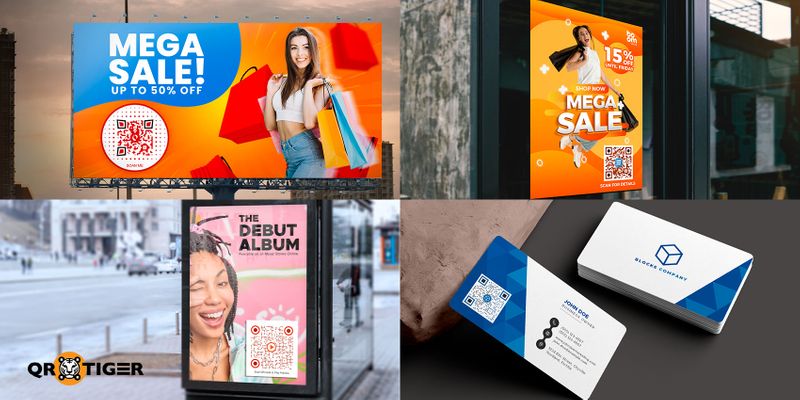
The placement of QR codes is crucial to get the scans and engagement you want from your audience.
QR codes are powerful marketing tools for boosting engagement and their placement directly affects how many people notice, trust, and scan them.
By choosing the right spaces to position them, you make scanning convenient for your audience, improving their experience when engaging with your brand.
In this guide, we share some practical QR code placement ideas to help make sure your codes stand out, spark curiosity, and drive action.
Table of Contents
Importance of QR code placement
A well-placed QR code draws the audience's attention without having to be intrusive and encourages them to scan it without hesitation.
It’s not just about sticking a code somewhere visible; it’s about positioning it in a way that feels natural, convenient, and intuitive for your audience.
A good QR code placement on posters easily helps customers learn about promotions or events. Compare this with posters with poorly placed QR codes — they do not attract as many scans as you want to.
Using the best QR code generator is only the start; you need to learn how to get the most out of your quick-response codes by placing them in the right spots.
Keep these key points in mind to guide you on how to position a QR code:
- Visibility - Place them where people naturally look (eye level, front-facing).
- Context - Match placement with intent or goal.
- Accessibility - Ensure people can easily scan the code.
- Environment - Consider the kind of space you’ll be placing your QR code (indoor or outdoor, internet availability).
- User Flow - Think about the time and place where people are most likely to engage.
Where is the best place to put a QR code?
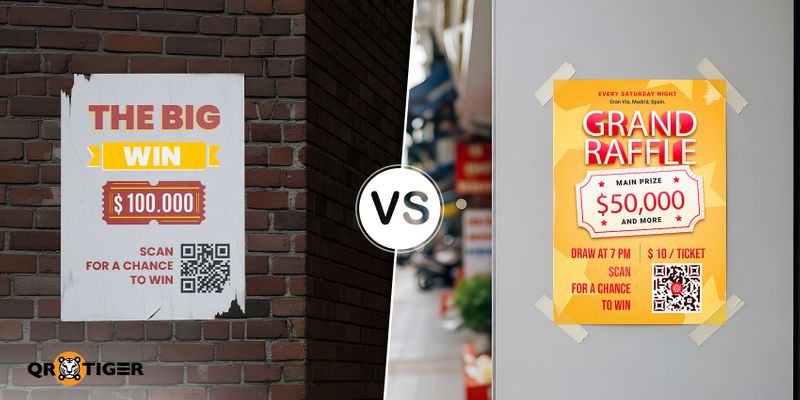
Whether it's for your restaurant, retail store, event, or outdoor advertising, strategic placement is the difference between a code that gets ignored and one that drives real results.
Below, we’ve made a list of some of the best areas to consider for your QR code campaigns, all of which ensure maximum visibility and effectiveness.
1. Places with lots of foot traffic
Always remember that the more exposure your code gets, the more chances of people seeing and scanning it.
Central parks, large malls, community recreation centers, and even sidewalks are perfect areas to place them since these areas attract high volumes of people.
For example, restaurants may place a Facebook QR code at the entrance to encourage guests to scan and instantly view the business’s profile, look into promos, or leave a review.
Shops and boutiques may also place QR codes on display windows, allowing passersby to quickly scan the code for promotions, discounts, or even direct links to online stores.
In events or conferences, it’s optimal to place the QR code on doors or hallways for attendees to quickly access schedules, speaker details, and networking groups, allowing them to navigate the event more efficiently.
2. At decision-making points
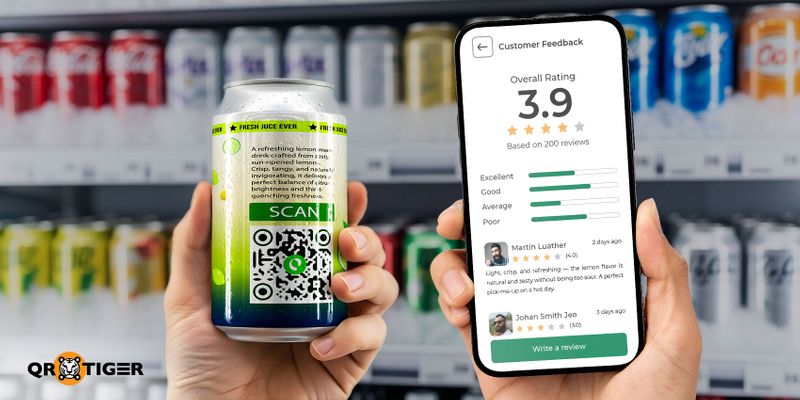
One of the best times to capture attention is when people are about to make a choice. These “decision-making points” are great times for a QR code to give extra help, information, or motivation.
At checkout counters, QR codes help customers sign up for loyalty programs, follow social media pages, or leave quick reviews.
On product shelves, QR codes offer detailed information about the product. By scanning, shoppers can find customer testimonials, tutorials, and exclusive discounts, which help them feel more confident about their purchases.
When you place the QR codes at these points, they act as timely nudges that turn a customer’s interest into action.
3. Areas with good lighting
Lighting plays a huge role in ensuring your QR codes are easy to scan. So, unless you’re using QR codes that glow in the dark, visibility under proper lighting is a must.
For outdoors, the best QR code placement in advertising is in open, well-lit areas to prevent shadows, glare, or low visibility.
If you plan to place them indoors, ensure there’s enough light nearby. You could also use digital screens for consistent brightness.
Good lighting doesn’t just improve scannability; it also makes the QR code more noticeable to people passing by.
4. Flat surfaces
As a rule of thumb, QR codes are ideally placed on flat, unobstructed surfaces to prevent distortion. This is because uneven or curved surfaces can make it difficult or sometimes impossible to scan them.
That’s why QR code placement on flyers, banners, posters, and digital displays is good because these materials have flat surfaces, which make scanning feasible.
If you’re considering adding a QR code to products, one of the best practices for QR code placement in packaging is to put them in a smooth or relatively flat area of the bag or box for clear printing and easy scanning.
5. On static displays
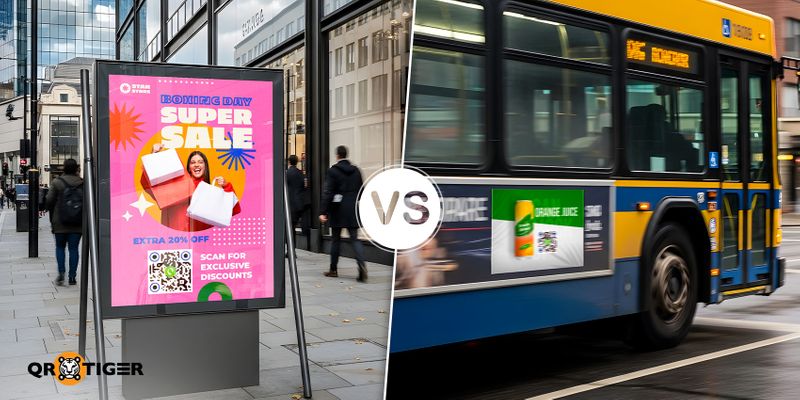
Static displays, like posters, banners, and standees, are perfect for QR codes. This is because QR codes work best when they stay stable, visible, and easy to scan.
Some good placement of QR codes are on a poster in a café, a standee at the store entrance, or a digital screen that shows the QR code long enough for people to notice and scan.
These give users the time and space they need to pull out their phone and scan without feeling rushed.
Putting QR codes on moving vehicles or quickly changing digital ads, on the other hand, can make scanning very difficult. The code might zip past too quickly, appear at odd angles, or vanish before someone can even focus their camera.
By keeping QR codes on stable surfaces, you can not only improve scan rates but also create a smoother experience for customers.
6. Within reach and eye-level
When placing a QR code, it’s important to position it at the right height and level. This way, people can scan it easily and without hassle.
That being said, one of the most crucial best practices for QR code placement is to keep it at eye level, because it helps people focus on the code without needing to bend down or strain their necks.
By employing this practice, you can help make the user experience better while increasing interactions with the QR code at the same time.
7. In weather-resistant areas
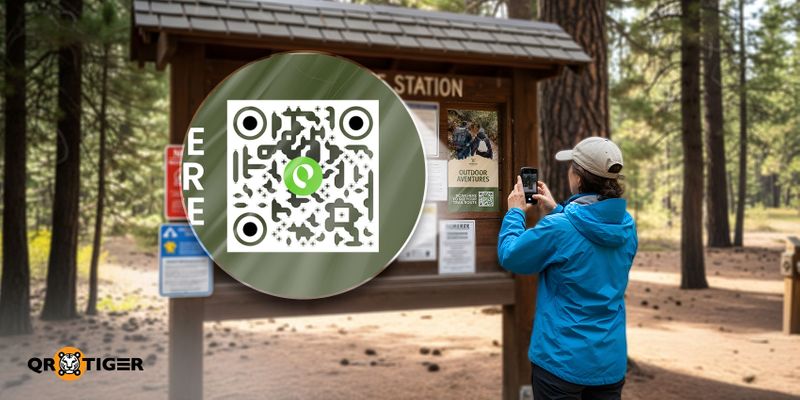
When placing QR codes outdoors, it’s important to think about how weather and environmental factors might affect their visibility and usability.
Rain, strong winds, humidity, and direct sunlight can make QR codes tough to scan. These elements can also make the material they are printed on wear down faster.
To avoid this, pick spots that offer some shelter, like covered areas. You can also use materials that handle outdoor conditions well.
Laminated prints, weather-resistant stickers, and UV-protected displays are also good options for keeping clarity over time.
The goal is to ensure that your QR code remains not just intact, but also visible and easy to use, regardless of outdoor conditions.
3 Things to remember when customizing QR codes
Having a creative QR code design makes your code stand out and make it match with your brand. But a poorly designed QR code can undo all the effort you put into choosing the right spot.
To make sure your QR code placement design remains both attractive and functional, here are three key things to keep in mind:
Size matters
When it comes to using QR codes, size does matter. A QR code should ideally be large enough to be scanned properly without requiring too much effort from the user.
The minimum recommended size is about 1.2 inches (3–4 cm). This size works well for QR code placement for business card designs.
For larger displays, the size should scale according to the scanning distance. For example, QR codes on billboards need to be about 2 meters (6.5 feet) wide if viewed from around 20 meters (65 feet) away.
Note: If you’re using an advanced QR code generator, using dynamic QR codes is best for your marketing campaign. Not only do they have less pixels and high error correction level, but they are also updatable, trackable, and scalable based on your campaign’s needs.
Function before fashion
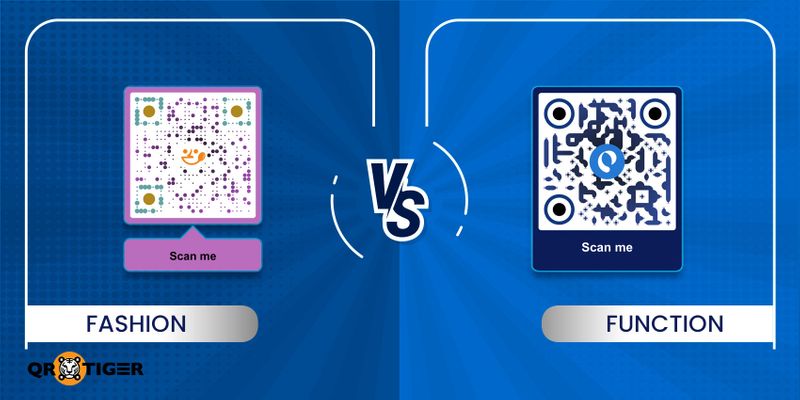
Even the best-placed QR codes can fail if their design makes them difficult to scan. Too much customization can make a QR code look nice, but difficult to scan.
One common mistake is inverting colors, as using low-contrast colors or reversing them makes it hard to scan the code. The code itself should always be dark, surrounded by a lighter background.
For better readability, keep a strong contrast between the QR code and its background. Avoid using pale or low-contrast colors as they can make the code blend in instead of stand out.
A clean, simple, and high-contrast design makes your QR code look great while also staying functional and easy to scan in real-world situations.
When in doubt, test it out
What looks good on paper may not always work smoothly in practice, so the best thing to do is test out the placement of the QR code to make sure it's working smoothly.
Using QR TIGER, you can create QR codes quickly, clone, and place them in different spots to see which ones work best. Then, with the use of your smartphone, you can check if they’re convenient and easy to scan.
Scan the code yourself from different distances and angles first and try it in various lighting conditions to ensure consistency. Have a few other people test it too, since phone models and camera quality can vary.
Learn from brands: How to position a QR code
Let’s look at concrete examples of effective application of the QR code best practices from real-world companies, which turn everyday QR codes into powerful brand experiences.
19 Crimes
Owned by Treasury Wine Estates, 19 Crimes gained popularity throughout Europe with its clever use of QR codes and augmented reality in marketing.
Where the code is placed:
Each bottle comes with a QR code neatly placed on the back label, ensuring it’s easy for customers to spot and scan while holding the product. Once scanned, it links the user to an app that allows them to see augmented reality.
Using the app, users can then use their phone camera on the front label of the bottle, making the character come to life and share their stories and "crimes”.
This success shows how strategic placement of QR codes can elevate customer engagement, as the brand placed the QR code where users would naturally look, which is on the back of the bottle.
Without this smart placement, the AR feature wouldn’t have been as easy to access or as impactful.
Adidas
Adidas, with Accenture Song Sweden, launched “The Billboard Run” on August 24, 2023. This event sought to spark local runners' passion by transforming the city into an urban racecourse.
Where the code is placed:
Runners could join the race by scanning a QR code on one of four digital billboards at different starting points around the city. After scanning, the code led participants to an app that tracked their progress as they raced to the finish point at T-Centralen Metro Station.
The campaign’s success was largely because of good placement of the QR code, as it made it easier for any passersby to see and check out, which drew in both experienced runners and curious novices.
As part of its initiative to support ex-offenders in building new careers, LinkedIn launched the Blank Canvas Communal Concept Store in Westfield Stratford.
Inside the store, ex-offenders highlighted and sold their designs while visitors had a chance to explore their personal journeys.
Where the code is placed:
QR codes were positioned next to artistic portraits of each participant, making it easy for people to spot and scan them. When scanned, visitors would be able to see and connect with the ex-offenders on LinkedIn.
This helped each ex-offender grow their LinkedIn network to over 500 connections by the end of the program.
Because of this success, LinkedIn won the 2023 Marketing Week Award for Branded Experiences, highlighting how careful execution and proper placement of QR codes can help promote your cause.
Coca-Cola
As part of its global Coke Studio music platform, Coca-Cola introduced illustrative QR codes.
Designed by creative technologist and artist Troy Ni, the QR codes combined functionality with visual artistry, transforming them into eye-catching designs that stood out compared to traditional black-and-white codes.
Where the code is placed:
These unique QR codes were launched in busy spots like movie theaters, stadiums, and theme parks all across the U.S., encouraging people to interact due to their curious placement and design.
When scanned, it would send users to Coke Studio’s newest song and video, which mixed art and music with technology.
This campaign highlights how clever QR design and smart placement in busy areas can grab attention and increase engagement.
TripAdvisor
TripAdvisor teamed up with the San Diego Tourism Authority and The Shipyard to launch “The Sunny Side of Things,” an immersive art campaign aiming to inspire people to travel to San Diego.
The initiative featured bright, engaging street murals in major cities such as New York, Chicago, and Los Angeles.
Where the code is placed:
Each mural, created by a different artist, had a QR code at the corner or side that let people unlock an augmented reality (AR) experience. The placement made it easy for people to be drawn in as they paused to admire or take photos.
Running from April 3 to April 30, the campaign showcased how QR codes, when properly positioned in high-visibility and creative public spaces, can boost both brand awareness and travel interest.
Follow the best practices for QR code placement
A QR code is only as powerful as where you put it. Place it in the right spot, and you’re not just sharing information, you’re creating an instant connection that can turn curiosity into action.
So don’t let your QR codes go unnoticed. Be strategic, think like your audience, and test every placement until it feels effortless to scan.
When you do, your codes won’t just sit on a poster or package; they’ll become opportunities for your audience to interact with you and your business.
And if you’re ready to create dynamic, customizable codes that match your smart placements, QR TIGER is the best choice. Over 850,000 brands worldwide trust us for their QR code campaigns.
It’s your move; be smart and make every one of your QR code count.
FAQ
What is the layout of a QR code?
A QR code features one large square with three smaller black-and-white squares in the corners, which are called finder patterns. Larger QR codes also include a smaller alignment pattern to help with orientation.
Other features in a QR code include the timing pattern, which defines the grid. A scanner that includes version and format details, along with data and error correction modules for the encoded data.
How much space do you need around the QR code?
Each QR code needs a clear border, or “quiet zone,” that surrounds it. This is what you call the white space surrounding the QR code that makes it easier for scanners to identify.
The quiet zone should be at least 4 times the width of the small squares in the code. As a general rule, smaller codes use 0.25 inches (6 mm) or 15% of the total size for larger codes.
What is the correct direction of a QR Code?
Technically, there isn't a single "correct" direction for a QR code as they are designed to be scannable from any orientation due to their square design and the presence of three prominent "finder patterns" (large squares in the corners).
These finder patterns (also called eyes) help a scanner identify and reorient the code regardless of which direction it's being scanned from.
This 360-degree readability is one of the main differences between QR codes and the older one-dimensional barcodes.


